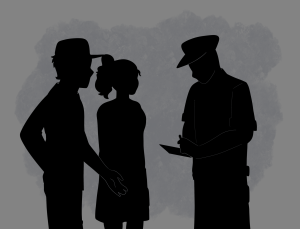Concussion Awareness in Athletics
March 1, 2018
Concussions are a major issue in contact sports; in recent years this has come to occupy a central role in the discussion of athlete health, as exemplified by the 2015 film “Concussion,” starring Will Smith. Many sports organizations within the last decade have made efforts to step up and make a commitment to preventing head injuries from happening, or, if not possible, preventing them from escalating to detrimental points. But how does this all affect our own athletic programs here at Whitman? I spoke with both faculty and student athletes in the Whitman community to talk about the dangers of concussions, how they are handled and what the future holds for concussion awareness.
If one is not familiar with the issue of concussions and similar head injuries, one may wonder what the exact repercussions are of having a concussion. Nathan Fry, the Assistant Athletic Trainer for Whitman Athletics, explained the risks.
“Dangers range from no real danger all the way to death and everywhere in between. Some concussions have no lasting effects while others can cause psychological changes and permanent brain damage. Multiple concussions given proper time to heal do not usually have serious consequences,” Fry said.
But what happens when an athlete does not allow proper time to heal such an injury? Fry states that this “can lead to second impact syndrome. Typically, when you hear of an athlete dying or suffering permanent damage from a concussion it is associated with second impact syndrome.”
Keith Farrington, a Professor of Sociology at Whitman and an avid sports fan, spoke briefly about the ethical repercussions that come with supporting contact sports that put athletes at constant risk for concussion:
“Football right now is a guilty pleasure because I know full well about concussions; I know full well that a lot of these guys that I love watching play when they reach the age that I’m at (if they’re fortunate enough to do so) their mind may be diminished and their physical bodies may be all beat up, and I have to deal with that as a human being. I’m rooting for something that may be harmful for the people that are playing it,” Farrington said.
When concussions are not handled in a proper manner, as outlined by Fry, they can have serious consequences and it then becomes ethically immoral to support the endangerment of athletes for profit and popularity.
So now, one may ask: how does our athletic department diagnose possible concussions and begin to treat them properly?
“We use a couple different programs to track an athletes’ concussion and their eventual return to sports. We use an online program call XLNT Brain and the SCAT 3 program. Both of these programs help to diagnose a concussion and monitor symptom levels. Once an athlete has passed the XLNT Brain test and has returned to their baseline for symptoms they are run through a progressive exercise program over the course of roughly a week before they are allowed to return to full sports participation,” Fry explained. He also wanted to make especially clear that “all [concussions are] different, even subsequent concussions for a given person can be different, so any concussion protocol has designated steps but is also inherently flexible enough to deal with different grades of concussion and the different symptoms the athlete may be experiencing.”
Fry was also able to speak to the plans that have been put in place by the NCAA itself to regulate the diagnosis and treatment of concussions, as well as the priority that is put on them as a serious injury:
“The NCAA has mandated that all student athletes and coaches take an educational session on concussions. Most NCAA member institutions hand out an informational pamphlet and require everyone to sign a document stating they have read the information. I believe this coupled with the fact that every NCAA institution has an athletic trainer on staff is enough to manage concussion severity … There are also companies who are developing concussion tracking devices that can be placed in either a helmet or headband that tracks the number of blows the athlete has received. These devices are great but costly at this point, but I do see them being widely used in the near future,” Fry said.
Sam Geschickter, a first-year basketball player who was unable to step on the court this year because of a head injury, was able to speak to the support he has received in just his first year as a part of the basketball program, and Whitman athletics as a whole.
“My coaches and trainers at Whitman have been incredible. I’m lucky to be at a place where my health is the first priority, that doesn’t happen at every school … The trainers here have done a great job working with me and doing the correct testing and helping me understand the best way to move forward with less risk of a concussion in the future. My coaches’ only concern the whole time was my long-term health. They never once talked about how me being out would impact our team. They just kept saying that they would never allow me to put my health at serious risk,” Geschickter said.
However, Geschickter felt that some changes did need to be made in order to allow for more flexibility with the treatment of such injuries, to both allow the athlete to manage their own body and to prevent athletes from making dangerous choices:
“I think the rules of each sport are changing and need to continue to change to put a reasonable emphasis on preventing hits to the head. When players do get a head injury there needs to be a more realistic concussion protocol. The options right now are either to report a concussion and have to sit out an unnecessary amount of time, or don’t report and have to keep playing right away. There is no in between where a player can decide when they feel ready to play again like you might with a sprained ankle for example,” Geschickter said.






